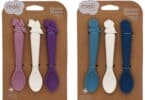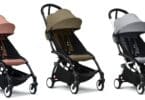Companies that manufacture or distribute children’s toys, zippers, and other products will now face increased government scrutiny to ensure the safety of these items. The Environmental Protection Agency (EPA), under legal pressure, has committed to contacting up to 120 importing and manufacturing companies by the end of the month. These companies will be required to provide health and safety studies if their products contain any traces of lead that could potentially harm children.
The EPA’s actions are part of a settlement reached with the Sierra Club and another advocacy group, Improving Kids’ Environment. As part of the agreement, the EPA must also inform the Consumer Product Safety Commission about concerns regarding the quality control measures of companies involved in the import and distribution of children’s jewelry.
Lead, a highly toxic element, can have severe effects on the nervous system, especially in children. The EPA has made significant progress in reducing lead emissions since 1976, primarily by removing lead from gasoline. However, sources of lead exposure still exist, including food, soil, solid waste, coal, oil, iron and steel production, lead smelters, and tobacco smoke.
It is essential for parents to remain vigilant and take immediate action when recalls on children’s products containing lead are announced. Jessica Frohman, co-chair of the Sierra Club’s national toxics committee, emphasizes the importance of removing these products from children’s reach as soon as possible.
While the EPA can ban the use of lead, only the Consumer Product Safety Commission has the authority to ban products. In response to a petition filed by the Sierra Club, the two groups sued the EPA last year regarding the production of lead-containing children’s jewelry. The lawsuit was prompted by the tragic death of Jarnell Brown, a 4-year-old who suffered from acute lead poisoning after ingesting a charm bracelet distributed by Reebok International Ltd.
In December, the Consumer Product Safety Commission began the process of banning children’s jewelry containing more than 0.06 percent lead by weight. This decision followed numerous recalls over the past two years due to lead concerns. Notably, over 70 major U.S. retailers agreed to stop selling children’s jewelry containing lead in California after legal action was taken by the Center for Environmental Health and the state’s attorney general in 2004.
It is evident that immediate action is crucial to protect children from the dangers of lead exposure through toys and jewelry. The government’s decision to implement stricter regulations reflects a necessary step towards ensuring the safety and well-being of our children.






